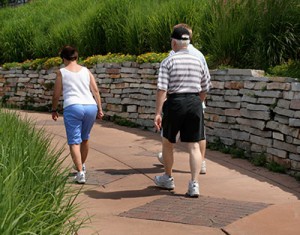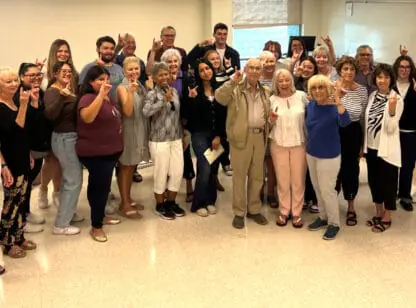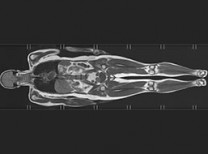
Walking helps ensure a healthy stride
Fear of falling is a common concern as we get older. And rightly so, as approximately one third of the elderly and over two thirds of nursing home residents fall each year. This statistic is due largely in part to the fact that as we age, our gait tends to change. Nearly 50% of people over the age of 65 demonstrate an abnormal gait pattern.
Some changes are attributed to the aging process; other gait abnormalities may be secondary to a variety of medical conditions including fracture, stroke, Parkinson’s disease, arthritis, and generalized weakness due to inactivity. Some of the characteristics associated with normal age-related changes in gait include:
Speed of Walking (velocity) often decreases as we age because elderly individuals tend to take shorter steps due to decreased strength of the calf muscles, which are responsible for propelling the body forward.
Double Stance Time refers to the amount of time both feet are on the ground at the same time during walking. The percentage of time spent in double leg stance increases with age because this provides a more stable position for moving the body forward. Because elderly people feel more secure when both feet are on the ground, they tend to avoid situations which require one foot to be off the ground for longer than the time needed to take a step. They may demonstrate loss of balance when asked to step over an object the size of a shoebox or be unable to step on and off a curb unless provided hand-held assistance.
Base of Support tends to increase in width as a person ages. An elderly person demonstrates increased side-to-side displacement when walking, much like the “waddling” pattern observed in the infant who is learning to walk. A wide base of support provides increased stability, but contributes to shortened step lengths and decreased speed. When the base of support is increased, there also tends to be a loss of rotation around the pelvis and a decrease in arm swing, which leads to a further decrease in step length and speed. In general, such a gait pattern can be described as “stiff” and “shuffling.”
Such changes in gait can be minimized by a combination of strength training, balance activities, and a walking program. Strengthening exercises should target key muscle groups which provide core stability and power in the legs. Balance activities improve the individual’s ability to move over the base of support in all directions, maintain balance within a narrow base, or walk on a variety of surfaces.
The single most effective activity for preventing a decline in function with age is a regular walking program, so grab a friend and get out and walk! Because physical activity is also known to improve mood and confidence, fear of falling, and therefore risk of falling, may also be reduced.
Gina Malloy is a physical therapist with New Beginning Physical Therapy, Inc., an in-home therapy company and can be reached at (760) 218.9961 or online at NewBeginningPT.com.











































Comments (0)